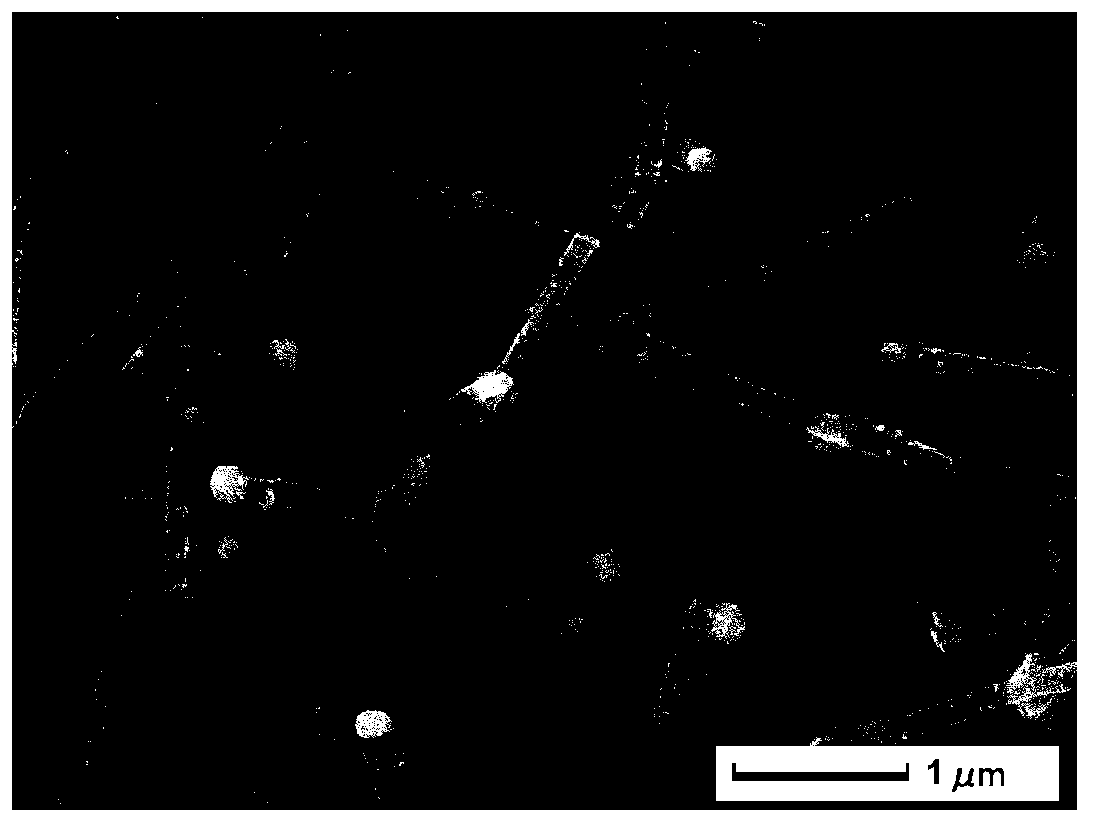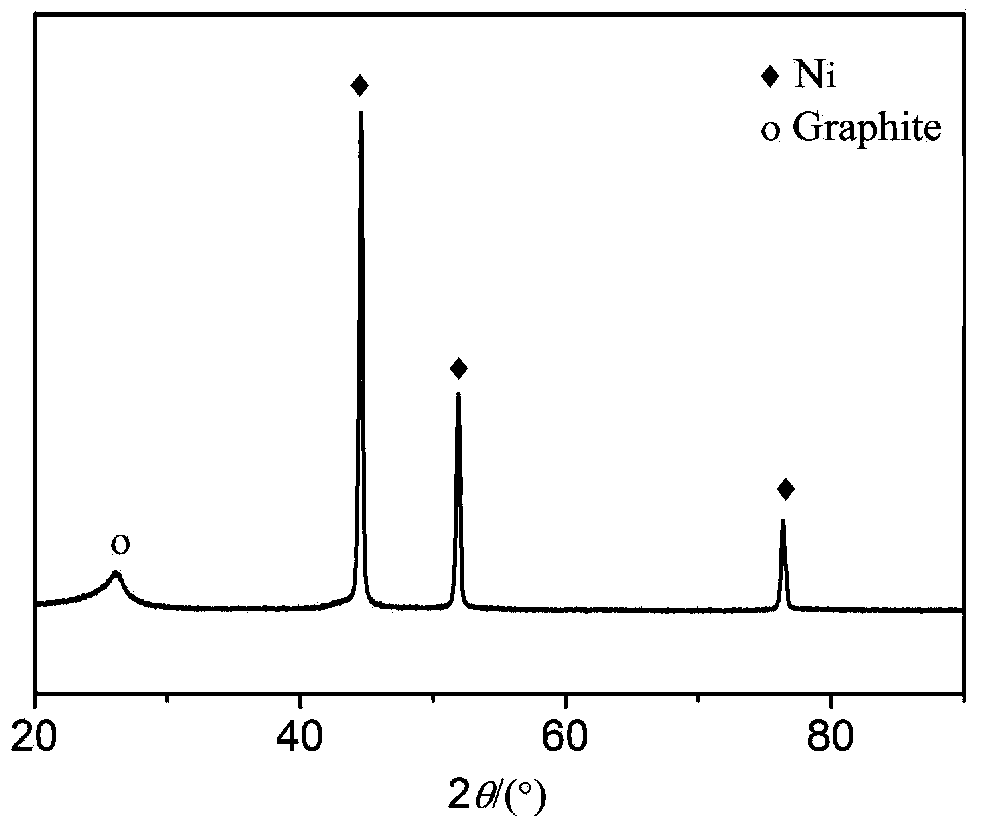Ni/C composite nanofiber microwave absorbent, preparation method and application of absorbent
A technology of composite nanofibers and microwave absorbers, which is applied in the fields of fiber chemical characteristics, chemical instruments and methods, rayon manufacturing, etc., can solve the problems of restricting normal use, poor oxidation resistance and corrosion resistance, and achieve light weight and improved High absorbing performance and high productivity
- Summary
- Abstract
- Description
- Claims
- Application Information
AI Technical Summary
Problems solved by technology
Method used
Image
Examples
Embodiment 1
[0027] Add 0.9g of polyacrylonitrile (PAN) into a conical flask containing 8.3g of dimethylformamide (DMF), heat in a water bath at 50°C and stir magnetically for 3h until PAN is completely dissolved, then add 0.8g of Nickel acetylacetonate, continued magnetic stirring at room temperature for 15 hours to obtain a uniform, transparent and stable spinning solution. The mass fraction of PAN in the spinning solution is 9%, the mass fraction of nickel acetylacetonate is 8%, and the rest is the solvent DMF. The prepared spinning solution was moved into the electrospinning device, and the voltage was 15kV, the receiving distance was 15cm, the solution supply rate was 0.5mL / h, the spinneret diameter was 0.9mm, the ambient temperature was 20-25°C, and the humidity was Electrospinning was carried out under the condition of 35-45% to prepare PAN / nickel acetylacetonate composite precursor fibers, and the collected precursor fibers were put into an oven and dried at 80°C for 10h. The drie...
Embodiment 2
[0029] Basic process is the same as embodiment 1. The difference is: the content of PAN in the spinning solution is 7wt%, the content of nickel acetylacetonate is 4wt%, the pre-oxidation temperature is 240°C, and the carbonization temperature is 800°C. The average diameter of the obtained Ni / C composite nanofibers is about 140nm ; When the absorber loading is 3wt%, the coating thickness is 1.9mm, the minimum reflection loss is –38dB, the effective absorption bandwidth is 6.7GHz, and the frequency range is 8.8~15.5GHz.
Embodiment 3
[0031] Basic process is the same as embodiment 1. The difference is: the carbonization temperature is 1200°C, and the average diameter of the obtained Ni / C composite nanofibers is about 120nm; when the absorber loading is 3wt%, and the coating thickness is 1.8mm, the minimum reflection loss is –46dB, effectively The absorption bandwidth is 7.8GHz, and the frequency range is 10.2~18GHz.
PUM
| Property | Measurement | Unit |
|---|---|---|
| diameter | aaaaa | aaaaa |
| density | aaaaa | aaaaa |
| thickness | aaaaa | aaaaa |
Abstract
Description
Claims
Application Information
 Login to View More
Login to View More - R&D
- Intellectual Property
- Life Sciences
- Materials
- Tech Scout
- Unparalleled Data Quality
- Higher Quality Content
- 60% Fewer Hallucinations
Browse by: Latest US Patents, China's latest patents, Technical Efficacy Thesaurus, Application Domain, Technology Topic, Popular Technical Reports.
© 2025 PatSnap. All rights reserved.Legal|Privacy policy|Modern Slavery Act Transparency Statement|Sitemap|About US| Contact US: help@patsnap.com



